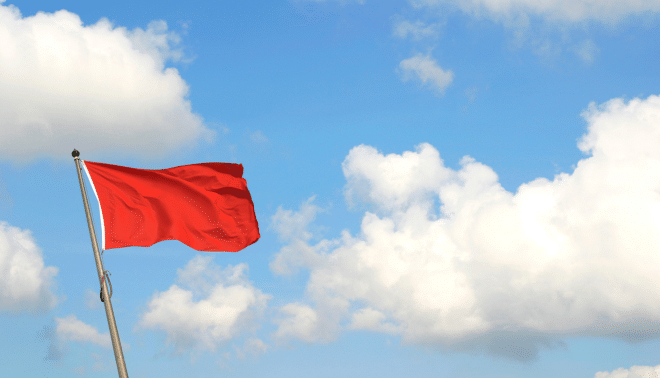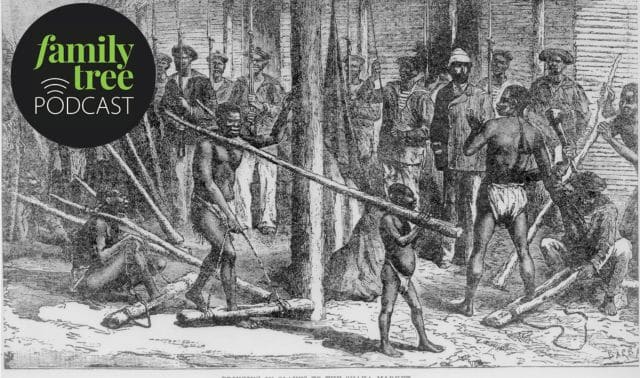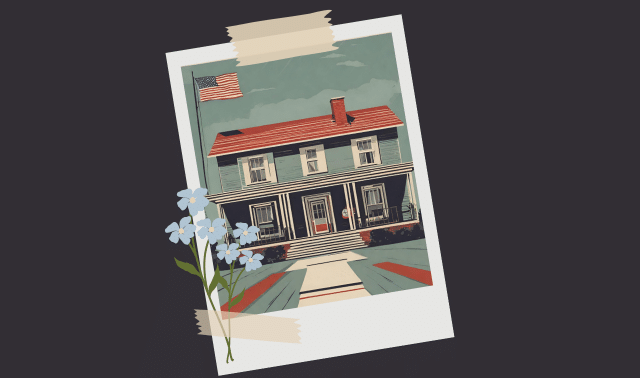Sign up for the Family Tree Newsletter Plus, you’ll receive our 10 Essential Genealogy Research Forms PDF as a special thank you!
Get Your Free Genealogy Forms
"*" indicates required fields
Cool photo-sharing websites abound, but nothing comes close to the megasite Flickr. It’s a simple concept: Individuals, museums, archives and others upload pictures and make them public for all to see. You can take a photo tour through history, comment on images to provide more information and if the Flickr contributor allows it, you can even download them.
You don’t have to be a Flickr member to view shared albums, but a free basic membership lets you add your own images—up to 300MB worth per month—comment on others’ photos, add “contacts” of your favorite users and more. (If you want unlimited uploads, you can get a pro level account for $24.95 a year.)
To find contacts, after you’ve signed up, click on the arrow next to Contacts in the top menu. Select Find Your Friends in the dropdown menu to import friends from Facebook or your e-mail contacts list. Scroll down and use the search box at the bottom of the screen to look for organizations and individuals already on Flickr. Type in keywords such as Library of Congress or Ohio state archives and hit Enter; the hits page gives you the names of matching contacts and how many images each has uploaded.
Click on a contact to see the user’s Flickr page, known as a photostream. To learn more about the organization and check the photo usage rights, click Profile. A link at the top of the page lets you add the user as a Contact (you also can make the user a friend or family, which lets them see your non-public images). Check along the right-hand side of the page for other photo collections and sets this contact has uploaded. Get started gathering contacts with my list of favorite Flickr photostreams:
The photostream of the nation’s attic is full of historic images from the Civil War, World War II, Eisenhower era, women’s history and more. Say you’re looking for images of women. Click on Collections at the top of the page, then select the one called Women’s History. That leads to sets of images called World War II Homefront, Women’s Rights, Women’s Bureau Photographs and more. Choose Mathew Brady—Women of the Civil War and you’re rewarded with a short overview of the collection, plus “thumbnails” of the images. Clicking any of those thumbnails brings up a page with a larger image, acompanying captions and copyright information. NARA makes many of its images downloadable; right-click (or Control-click on a Mac) to save the image to your hard drive.
You can view plenty of historical photos in the LOC photostream; one of my favorites being the set of Illustrated Newspaper Supplements from the New York Tribune (part of the Historic Newspapers collection). This fascinating group of Tribune covers begins in 1909 and shows you what people were talking about when each issue came out. The Photographer in the Picture set captures shutterbugs.
The LOC is using crowdsourcing to help solve unidentified photo mysteries. Staffers started the Mystery Pictures—Solved set with 22 unidentified travel images. Within days, Flickr users had annotated them all. Now each photo’s page includes maps and links to more information.
The International Museum of Photography’s Flickr page doesn’t disappoint. As for many other photostreams, click on a picture to see a slideshow of all the images, including a Lincoln Conspiracy Album, WWI photos and more. You’ll get an overview of the history of photography from early daguerreotypes to a lovely group of autochromes (colored images from the early 20th century).
19th Century Photographic Images
Here, take a peek at 19th-century family photos (most unidentified) from the United States and abroad. Images range from adorable babies to men in uniform, each captioned with the name of the photographer, date and type of photograph.
Valerie from Atlanta uses Flickr to show her family photos, organized by surname, along with images of newspaper articles and other genealogy-related items. Her clever use of old and new photography inserts relatives (in the form of a strategically positioned old photo) into shots of family history-related locations.
Check out this photostream to see scenes from the Wild West, help the FBI identify stolen images and solve photo mysteries in the library’s collection. This is one site to return to again and again, especially on Wednesdays: Every week is Weird Photo Wednesday.
You can time travel to the United Kingdom through 900 years worth of material in this photo archive. It’s grouped into three broad collections (Photography; Africa Through a Lens; and Artwork, Artifacts and Documents), each containing several sets of photos. My favorite way to view them is using the Archives link at the top of the page, which organizes images by the date they were taken and when they were uploaded to Flickr.
Flickr makes it easy for even small libraries and museums around the world to put photos online—making it a perfect place to search for images from your ancestral homelands. This municipal library in Toulouse, France is posting photos of the region dating from 1870 to 1920.
Stop by this photostream to see both peeks behind the scenes at the library’s archival preservation facilities and historical photos. In the Military and Peacekeeping collection, for example, Alice Isaacson’s Photo Album has images donated by a WWI nurse who served with the Canadian Army Medical Corps. They show soldiers, other nurses, hospital tent interiors and more. The Exploration and Settlement collection has photos of immigrants at Grosse Île from 1832 to 1937.
This group, coordinated by James Morley of WhatsThatPicture.com, is for “original, truly vintage, genuine images” taken prior to 1945. Want to share an image from your Flickr page? Just join the group, then click on Upload a Picture and select one from your own photostream. To find more groups, click the arrow next to Groups at the top of the page and select Search for a Group.
Tips:
- See Family Tree Magazine readers’ ancestral photos—and share your own—on our Flickr photostream.
- You can use a Flickr Pro to back up your photos, in addition to sharing them with family. You’ll find more information in our Photo Sharing 101 on-demand webinar.
From the December 2011 issue of Family Tree Magazine
More great genealogy resources from Family Tree Magazine:
ADVERTISEMENT




